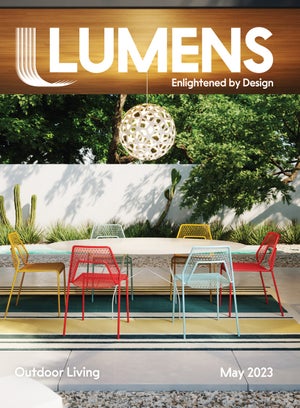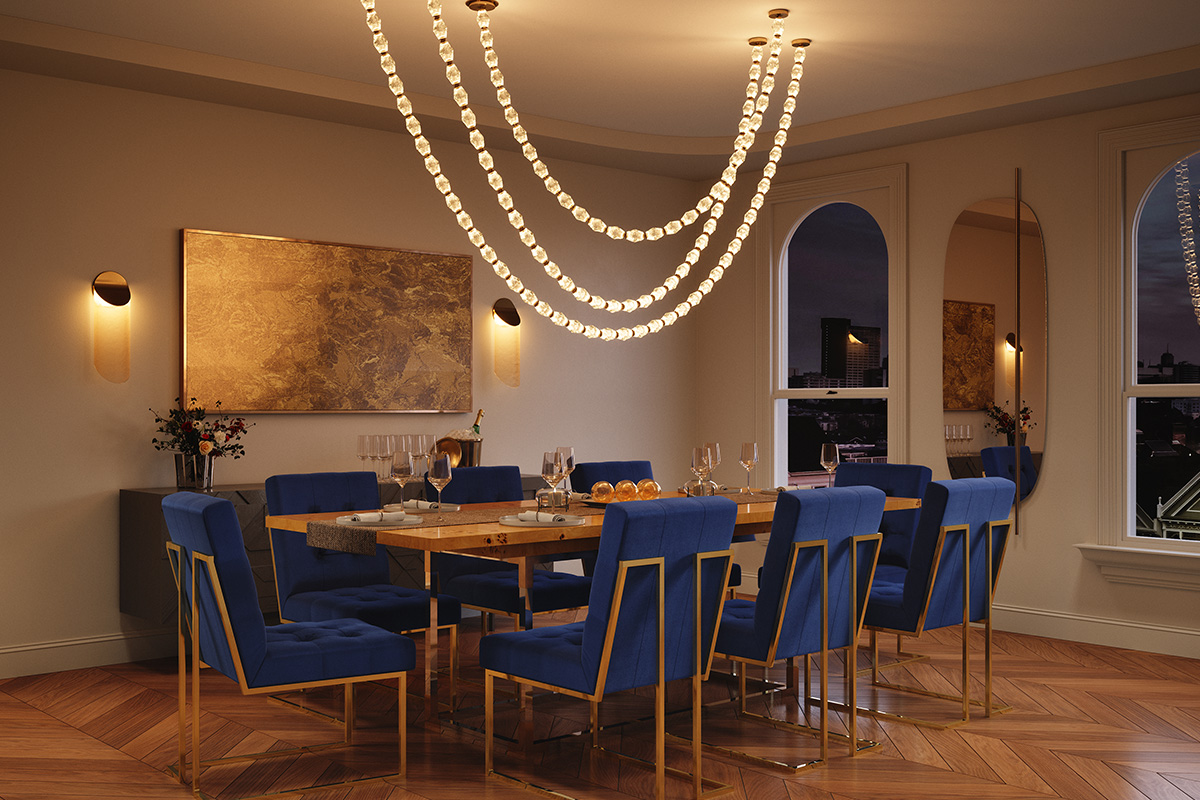
Long gone are the days when crystal chandeliers were reserved only for the extravagance of aristocrats and their palatial estates, or dripping with opulence from the high ceilings of royal hallways.
Today, designers are using crystal in sleek, modern ways while still harnessing the unique luster produced by the traditional glass-blowing methods that started on the island of Murano. And with the introduction of LED, these modern crystal fixtures have evolved to take on forms never before thought possible.
The Evolution of Crystal Making
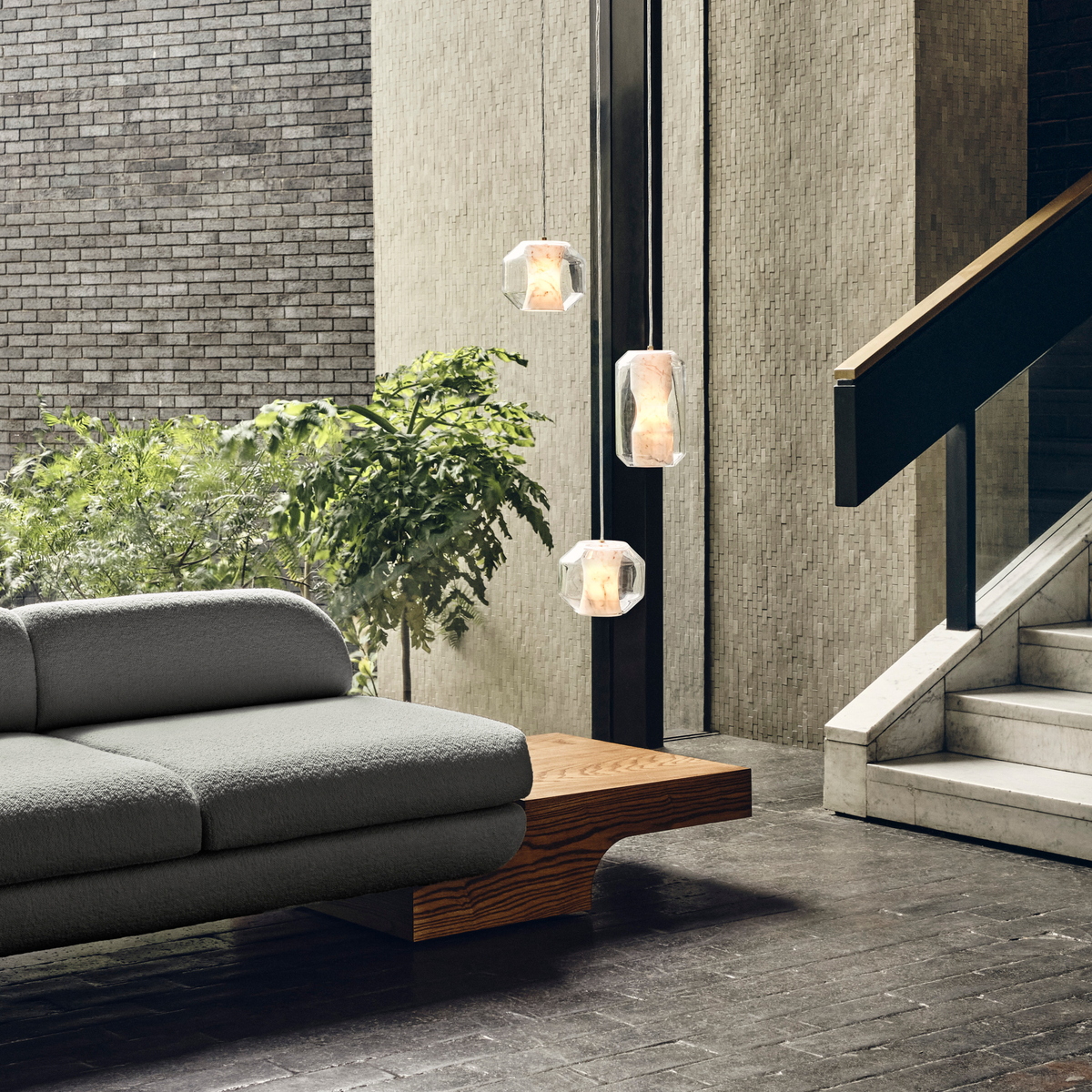
The evolution of crystal making begins in forest-filled Bohemia, and like many stories of crystal, Bohemia’s starts with glass. In the early 13th century, artisans working in the northern Lusatian Mountains produced the glass that would be used for monastery windows, and by 1414, the world’s first glass factory would open in Chřibská.
But the making of glass, though similar, is decidedly—and importantly—not the same as making crystal.
While Italy was making a name for itself in glassblowing on the island of Murano, Bohemian glass makers found that adding chalk and potash allowed for a more durable material than what was coming from Italy. But, being difficult to produce and cut led to high price points on the precious material, and most crystal pieces were seen only in the homes of the most well-off in society.
In 1676, another advancement hit the crystal scene. Patented by the English importer/exporter and glass tradesman, George Ravenscroft discovered that adding significant amounts of lead oxide made the crystal easier to cut and even more prismatic in effect, giving weigh to the advent of traditional English chandeliers that took over the palaces and castles of high royalty.
Fast-forward to the Industrial Revolution, and the familiar name of Swarovski revolutionized the crystal industry with the introduction of a machine that made it easier to cut the precious material, and more affordable to own for the growing middle class.
And, over the years, that desire for the luxury of crystal has made what we know about the material a little muddy. “Crystal blown-glass” and “Crystal-like acrylic” are alluring to the eye, but slapping the word in front of another material does not crystal make.
Defining Crystal: A Science, an Art
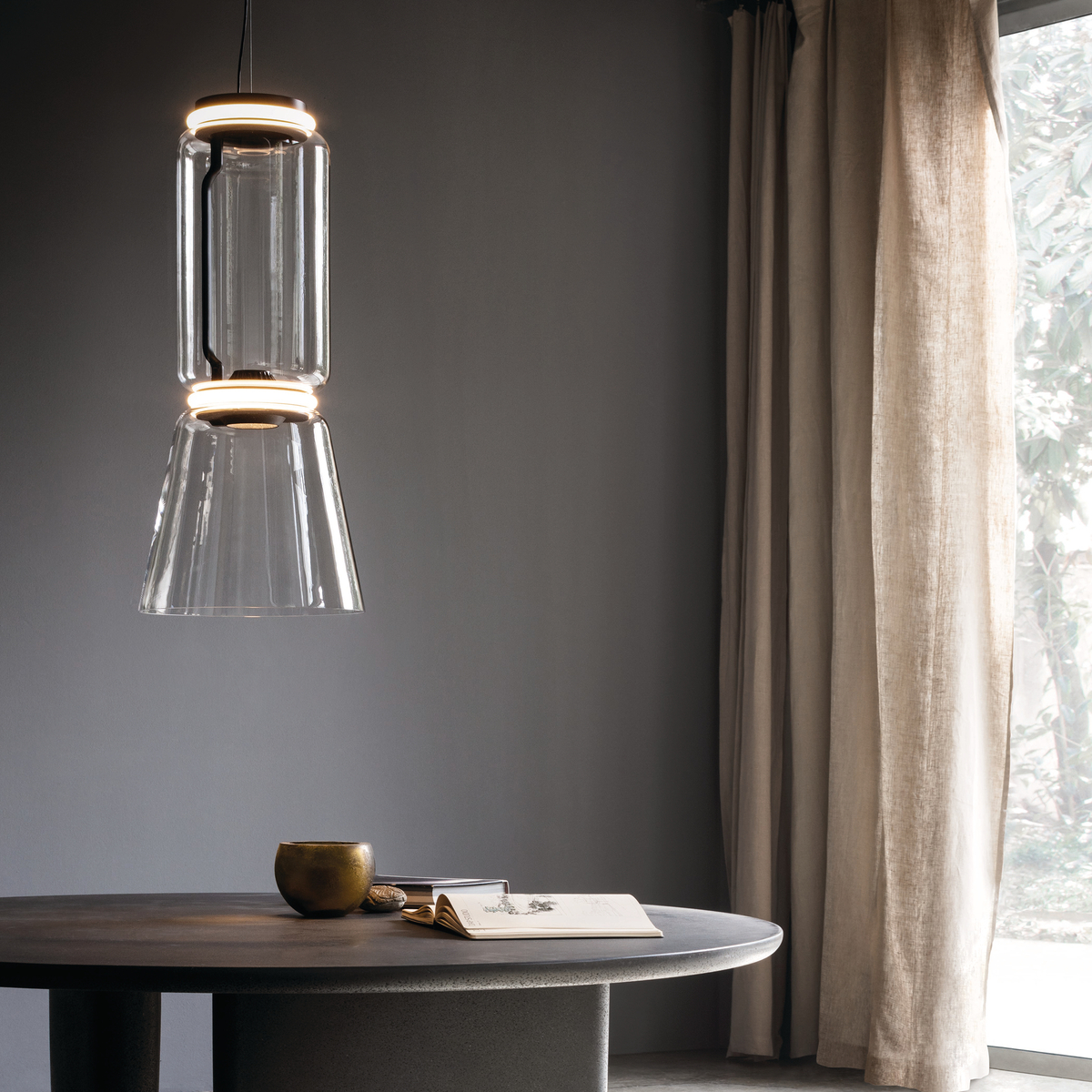
Today, true crystal differs by region. In the U.S., crystal only needs 1% of lead oxide, but across the Atlantic, 24% lead oxide is needed to attain real crystal status. While glass is most traditionally made from combining soda, sand ash and limestone for a durable but less moldable material, crystal requires lead oxide, antimony and silica, making the material easier to work with at lower temperatures than standard glass, which makes possible those long, thin and complex shapes seen in the chandeliers of today. Increasing the clarity of the material and heightening crystal’s ability to bend—or refract—light, this combination also allows artisans to eliminate air bubbles and imperfections while the crystal melts and forms, creating the flawless, opulent material that, even in contemporary times, remains a calling card for luxury.
Modern Crystal: From the Great Halls of Versailles to Middle America’s Dining Rooms
With the advent of LED lighting, crystal has been blown and crafted into designs far more elaborate and intricate than the classic Versailles-style chandelier of the past. From blown-glass beads of crystal to multi-light pendants, these prismatic fixtures imbue a modern room with grandeur, sparkling in their brilliance and clarity.
Multi-Light Modernity

When bringing crystal into more modern décor, consider a contemporary multi-light pendant. Often embodying the same grandeur of a traditional chandelier, this style fits right into the same placements that a classic chandelier would, like above dining tables or suspended over the center of a grand entryway.
Tactile Textures

Crystal’s ability to be shaped into different forms and textures makes it the perfect option when looking to bring a natural quality to lavish interiors. Thanks to Ravenscroft’s addition of lead oxide to the precious material, glass blowers can craft crystal into nearly any shape, achieving a delicate, but durable centerpiece that blends modern style with the tactile nature of hand-blown glass rock.
Luxury from Dawn till Dusk

Though often overlooked, bathrooms are a prime environment for the luxurious look and feel of crystal. When working with smaller spaces, opt for tubular pendant lights to maximize space without overpowering the room. Choosing fixtures that feature a multifaceted finish brings depth and texture to the space—and don’t forget the sparkle.
A Versatile Blend
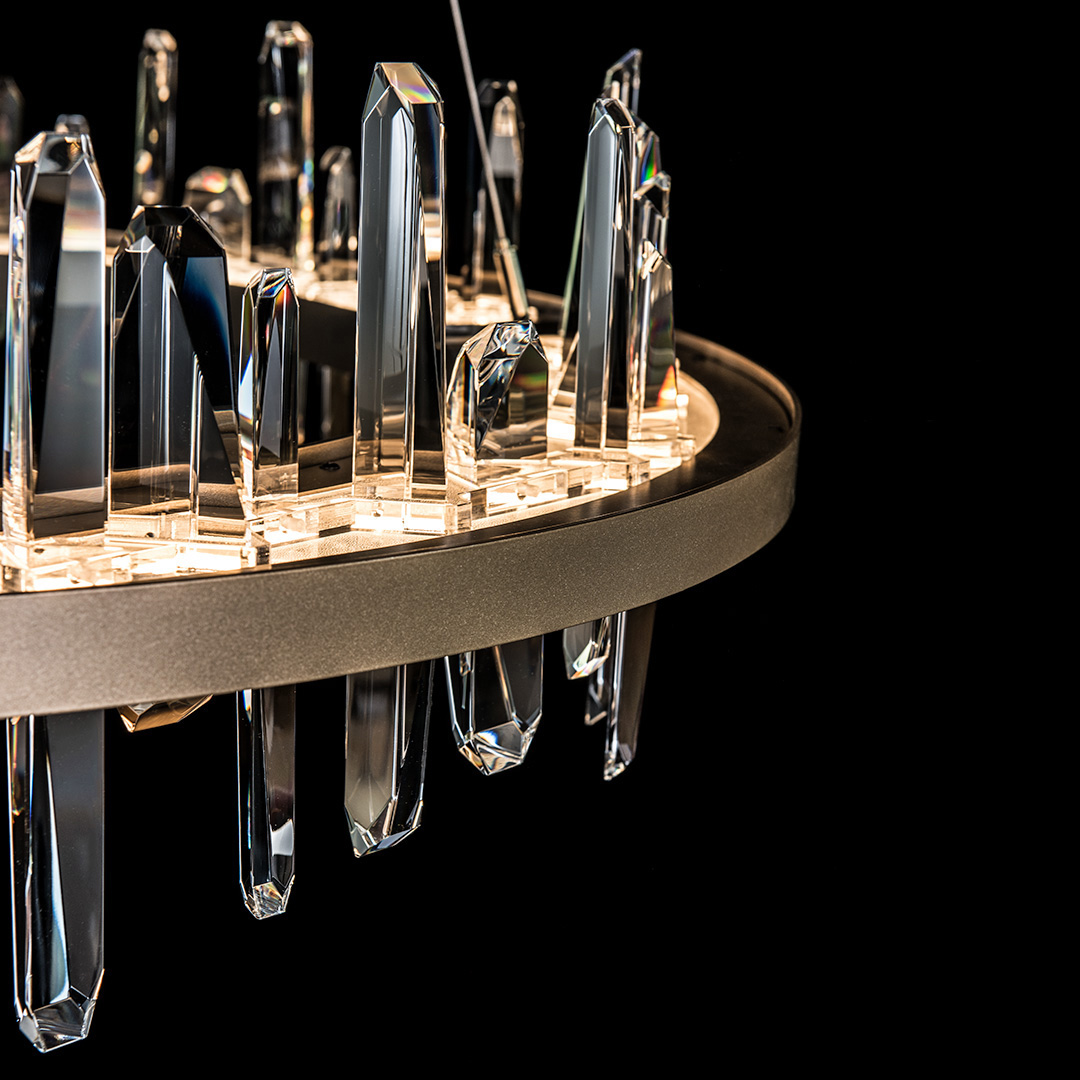
While the essence of crystal does evoke a graceful, feminine air, incorporating unexpected materials can give the modern fixture a more rugged feel. Think industrial chic: Combining crystal with the rough and robust look of steel, this blended look offers added versatility, especially in the case of spaces incorporating both masculine and feminine décor.
The Classics Re-Imagined
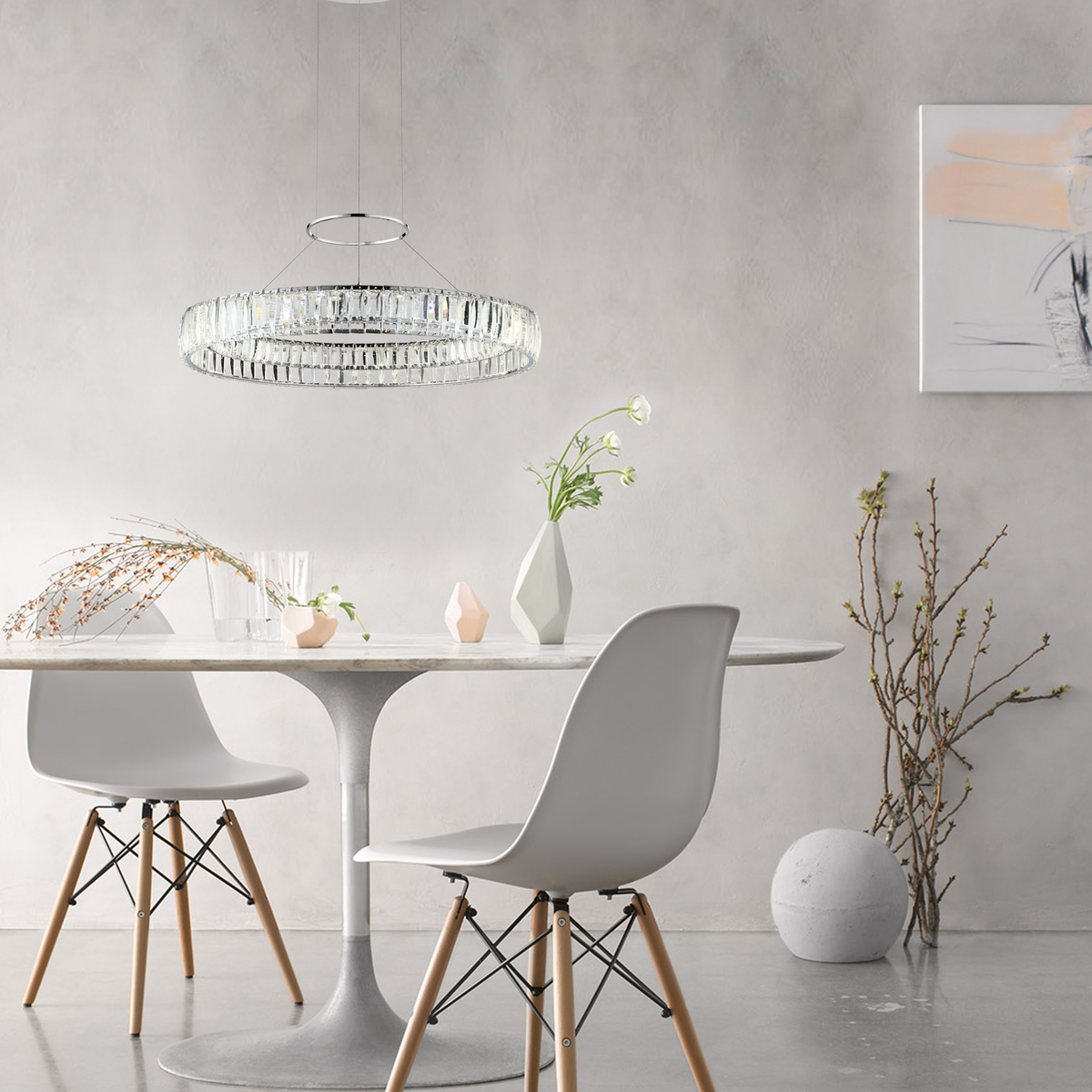
An even balance between the dazzling light of crystal and a simple, minimal shape can make just the right amount of an impression on a space. For this, ring-shaped chandeliers offer the perfect solution, and make for a welcome addition over a living room or dining table without sacrificing the ethereal quality that crystal imbues wherever it may hang.
With new design inspirations and the latest in manufacturing and LED technologies, today’s designers are taking the classic lines and multifaceted cuts of past fixtures to bring a modern versatility to crystal’s centuries-old legacy of luxury and glamour, creating pieces unlike anything we’ve ever seen before, and delivering new and exciting ways to preserve the unmistakable charm and beauty of a classic crystal chandelier.










